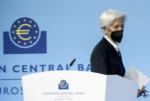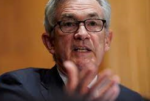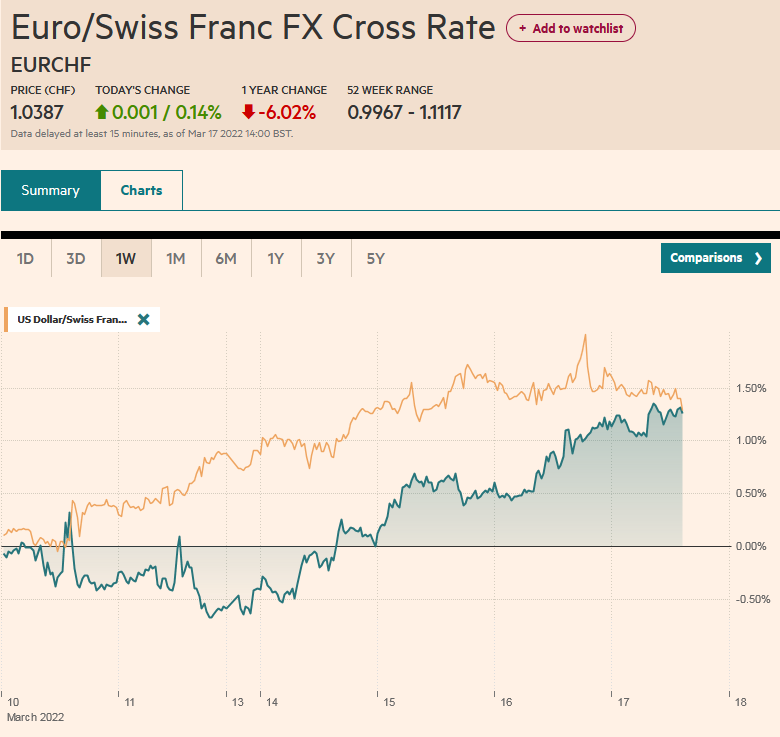Overview: The resignation of a UK prime minister makes for high political drama, but the markets hardly moved on it. Sterling, like most of the major currencies, are recovering against the dollar today. UK equities are higher but are not really outperforming their peers. Asia Pacific bourses rallied, with Taiwan leading the way with a 2.5% surge. Europe’s Stoxx 600 is up 1.4% after yesterday’s 1.65% gain. US futures are around 0.25%-0.35% better. Benchmark bond yields are rising with European 10-year yields mostly 10-13 bp higher. The 10-year US Treasury yield is up nearly four basis points to 2.97%. Emerging market currencies are mostly higher, but the larger than expected rate hike by Hungary has not helped the forint which is trading lower. Gold dumped to
Topics:
Marc Chandler considers the following as important: 4.) Marc to Market, 4) FX Trends, Australia, Bank of England, China, Currency Movement, Featured, Federal Reserve, Hungary, newsletter, Peru, Poland, trade, U.K., USD
This could be interesting, too:
Nachrichten Ticker - www.finanzen.ch writes Die Performance der Kryptowährungen in KW 9: Das hat sich bei Bitcoin, Ether & Co. getan
Nachrichten Ticker - www.finanzen.ch writes Wer verbirgt sich hinter der Ethereum-Technologie?
Martin Hartmann writes Eine Analyse nach den Lehren von Milton Friedman
Marc Chandler writes March 2025 Monthly
Overview: The resignation of a UK prime minister makes for high political drama, but the markets hardly moved on it. Sterling, like most of the major currencies, are recovering against the dollar today. UK equities are higher but are not really outperforming their peers. Asia Pacific bourses rallied, with Taiwan leading the way with a 2.5% surge. Europe’s Stoxx 600 is up 1.4% after yesterday’s 1.65% gain. US futures are around 0.25%-0.35% better. Benchmark bond yields are rising with European 10-year yields mostly 10-13 bp higher. The 10-year US Treasury yield is up nearly four basis points to 2.97%. Emerging market currencies are mostly higher, but the larger than expected rate hike by Hungary has not helped the forint which is trading lower. Gold dumped to nearly $1732 yesterday and is stabilizing today but remains below $1750. August WTI is up almost 1% but holds below $100 a barrel after falling by more than 9% over the past two sessions. US natgas is also snapping a two-day decline, while Europe’s benchmark is up another 3.75% after jumping 6.7% yesterday. It is up almost 23% this week so far. Iron ore rose 2.3% and more than recouped yesterday’s loss. Copper is also jumping back. It fell by about 5.5% on Tuesday and Wednesday and is up nearly 3.5% today. September wheat is ending a five-day, ~15% slide and is up almost 4%.
Asia Pacific
China reported a larger than expected draw down of its foreign currency reserves last month. The $56.5 bln (~1.8%) decline was much larger than the $16 bln that had been expected (median, Bloomberg) but was most likely benign in the sense that it reflected valuation adjustments rather than intervention in the foreign exchange market. Consider that if China has $1 trillion of its reserve in euros, the 2.3% decline translates to a $20 bln decline in reserves. If China held the equivalent of $300 bln in yen reserves and the yen declined by 5.2%, that would take another $15.6 bln from reserve valuation. You get the idea, and of course, the underlying investments (bonds) also sold off last month. The exact allocation of China's reserves is a closely guarded secret. Still, the US Treasury TIC data has only been released through April. Over the first four months of the year, it estimates that China's Treasury holdings have fallen by $65.3 bln. During this period, China's reserves fell by almost $130.5.
Australia reported the third consecutive surge in its trade surplus. It stood at A$15.97 bln in May, which is nearly half again as large as economists expected (A$10.83 bln). The April surplus was revised to A$13.25 from A$10.50. The five-month moving average stands at A$12.1 bln. In the same period last year, the average surplus was nearly A$9 bln, and in the first five months of 2019, the average was closer to A$4.8 bln. Exports jumped 9% in May after a revised 5% increase in April (initially 1%). Economists had projected a 2% gain. Imports rose 6%, twice what was anticipated.
The US dollar has flirted on an intraday basis the 20-day moving average against the yen, but it has not closed below it for over a month. It is found around JPY135.30 today. As US yields recovered from early weakness yesterday, so did the greenback, which made new session highs late in North America yesterday around JPY136.00. US yields are higher today and the dollar is near a five-day high set Tuesday near JPY136.35. Last week it set a new 22-year high around JPY137.00. For the third consecutive session, the Australian dollar held the $0.6765 support area, which is the (50%) retracement objective of the rally off the March 2020 low. Although it has risen above yesterday's $0.6825 high, it has struggled to maintain the upside momentum. A move above $0.6845 would help lift the tone. The Chinese yuan continues to trade in relatively narrow ranges. The dollar is hovering around CNY6.70. It remains in the range set on Tuesday (~CNY6.6845-CNY6.7235). It settled around CNY6.7015 last week. The dollar's fixing was set at CNY6.7143 today, a bit higher than the median projection in Bloomberg's survey of CNY6.7126.
Europe
Reports suggest that after more government resignations earlier today, the UK Prime Minister Johnson has agreed to step down. Reports suggest he wants to step down after the Tory leadership contest in Q4. Yet, it is not clear that he clear has the power to dictate his exit. The situation appears fluid. With the Conservatives lagging Labour in the polls, they want to avoid an election. While it is tempting to attribute sterling's advance to the political developments, we suspect it is a bit more complicated. First, the dollar is softer against most of the majors. Second, sterling has been appreciating against the euro all week. In fact, today is the fourth consecutive session. In fact, the cross is at its lowest level in a month.
Separately, two Bank of England officials (Deputy Governor Cunliffe and Chief Economist Pill) seemed threaten to join three of their colleagues who dissented in favor of a 50 bp hike last month. The BOE has hiked five times at quarter-point increments. The rhetoric has become more aggressive. The central bank said it could be more forceful as it increased its projection of CPI to 11% in October as the gas price cap is raised. The comments did not provide the market with new insight. The swaps market has about an 84% chance of a 50 bp rather than a 25 bp move priced in, down ever so slightly on the day. As recently as June 28, it had been fully discounted.
In a key policy speech, French Prime Minister Borne announced the government's intention to nationalize the rest of EDF as President Macron indicated in the recent campaign. The government currently owns about 84% and will seek to own 100%. Earlier this week, Germany's cabinet approved legislation that would allow the government to aid utilities (e.g., Uniper) that are part of the collateral damage of Russia's invasion of Ukraine. Recall that last year, the British government, in its biggest bailout (GBP1.7 bln initially) since the Great Financial Crisis, rescued Bulb, the energy supplier (and is getting ready to sell it this month). An estimated 30 UK energy suppliers have failed during the crisis.
The euro is holding above yesterday’s multi-year low slightly above $1.0160. It has been capped around $1.0220 today. The pace of the euro's slide, it settled last month near $1.0485, has taken many by surprise. ECB officials have been nearly silent about the euro's decline, which seems to run contrary to the so-called "reverse currency wars" that some analyst and reporters have tried framing. Some now suggest intervention, but the risks seem negligible. Intervention is best conceived of as an escalation ladder and officials do not appear to have even stepped on a low rung, as the Japanese officials have with verbal intervention. Still, the talk about intervention, and some claims quoted on the news wires that the euro is "uninvestable" shows the extreme sentiment. The $1.0250 area needs to be overcome to stabilize the tone. Sterling has briefly traded above yesterday's $1.1990 high but stopped shy of $1.20. A move above $1.2015 would help the technical tone and allow for gains toward $1.2100. Lastly, note that Hungary delivered another large rate hike (200 bp on its one-week depo rate to 9.75%), while the market had expected a move half the size. Poland is expected to hike its base rate by 75 bp to 6.75%.
America
The FOMC minutes confirmed what the market already knew, which is not so much a criticism as recognition of the success of the Fed's communication despite the various voices. The Fed has come to recognize that to subdue inflation and ensure that elevated price pressures do not becoming embedded into business', employees', and consumers' mindset will likely cause some pain. However, that pain is seen as less than the alternative. An unexpected upward revision in the service and composite PMI, the slightly stronger than expected ISM services report, and the JOLTS was better than anticipated helped lift the July Fed funds futures to the high of the day. It backed off a basis point or so and recouped it after the FOMC minutes. At the end of last week, the July Fed funds futures were discounting a 72% chance of a 75 bp move rather than 50 bp. It is now about an 88% chance. Meanwhile, the US 2-10-year yield curve remain inverted for a second day yesterday. The last inversion also was in early April and lasted two sessions. This one may persist a bit longer.
The US reports the May trade balance today. The advanced goods report showed a $2.4 bln narrowing of April's shortfall. Ahead of tomorrow's nonfarm payroll report, the weekly jobless claims may not attract much attention. Although, as we have noted, the four-week moving average has risen by about 30% of the cyclical low, continuing claims remain stuck in its trough. This means that people are not staying jobless for long. Canada exports May trade figures today and Canada, like Australia, is experiencing a positive terms of trade shock as export prices rise faster than import prices. Canada will also report June employment figures tomorrow. Mexico reports inflation figures today. Pressures appear to have accelerated in the second half of last month. The market expected Banxico to lift its target rate by 75 bp when it meets on August 11. Separately, note that S&P lifted the outlook for Mexico's credit rating to stable yesterday. Lastly, Peru is expected to deliver another 50 bp hike later today.
The US dollar held above CAD1.30 yesterday for the first time since November 2020. However, the greenback has come back offered today and has been sold below there in Europe. Much damage was done to the technical backdrop of the Canadian dollar in recent days. A break of CAD1.2985 could see the US dollar retrace more of its gains. Initial support is seen near CAD1.2960 and then CAD1.2930, where the 20-day moving average is found. The US dollar is pulling back against the Mexican peso as well, but it remains above yesterday's low (~MXN20.50). A break of MXN20.42 could help forge a top.
Tags: #USD,Australia,Bank of England,China,Currency Movement,Featured,Federal Reserve,Hungary,newsletter,Peru,Poland,Trade,U.K.








